Colorful and crunchy vegetables are the star ingredients for my quick, simple Everyday Japanese Pickles. These lightly seasoned asazuke are ready in 1 hour! Take them to the next level by adding shiso leaves, yuzu zest, and sesame oil.
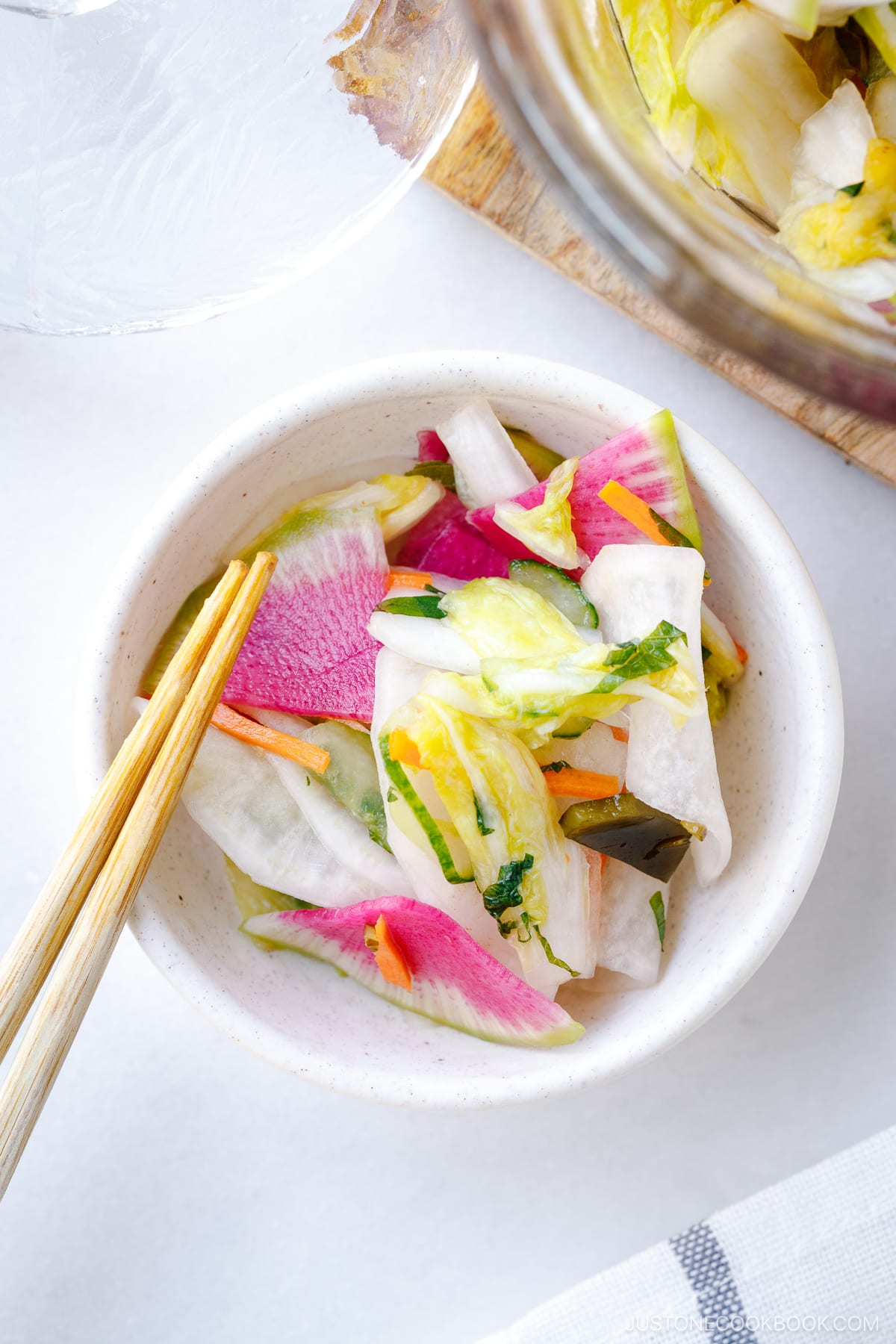

I’ve shared many Japanese pickle recipes in the past, but if you ask me which one I make most frequently, I’d pick today’s recipe—Everyday Japanese Pickles.
I call them ‘Everyday’ because these pickles never fail to complement and brighten my daily meals. Not only is the flavor light and refreshing, but the snappy texture of the vegetables is pure delight! They also add a splash of color to my Japanese meal (as shown below).
This quick and simple homestyle pickle is called asazuke (浅漬け). I usually prepare the pickles first when I’m getting ready for the meal so that we can enjoy them by mealtime.


What is Asazuke?
Japanese pickles, generally known as tsukemonocome in many different styles, and Asazuke (浅漬け) is one of the easiest and quickest to make, where the vegetables are lightly pickled for a very short time. This type of pickle is also called of glory (instant pickled) or oshinko (fresh incense).
To make these pickles, we cut vegetables into small pieces and either sprinkle them with salt or soak them in pickling liquid. Osmotic pressure causes the vegetables to release liquid and allows the pickling liquid to penetrate them. With asazuke, we gently pickle the vegetables for 1–3 hours (or up to overnight), allowing you to enjoy the natural taste and aroma of fresh vegetables compared to traditional fermented pickles.
These days, most Japanese home cooks don’t make tsukemono, which takes days or months. Instead, they make asazuke regularly or purchase store-bought tsukemono to serve as a part of the ichiju sansai meal.
Why You’ll Love This Recipe
- So easy and simple to make!
- A nice addition to complete your meal and a great palate cleanser!
- A great way to use up odds and ends of vegetables in the refrigerator.
- A short pickling time of 1–3 hours.
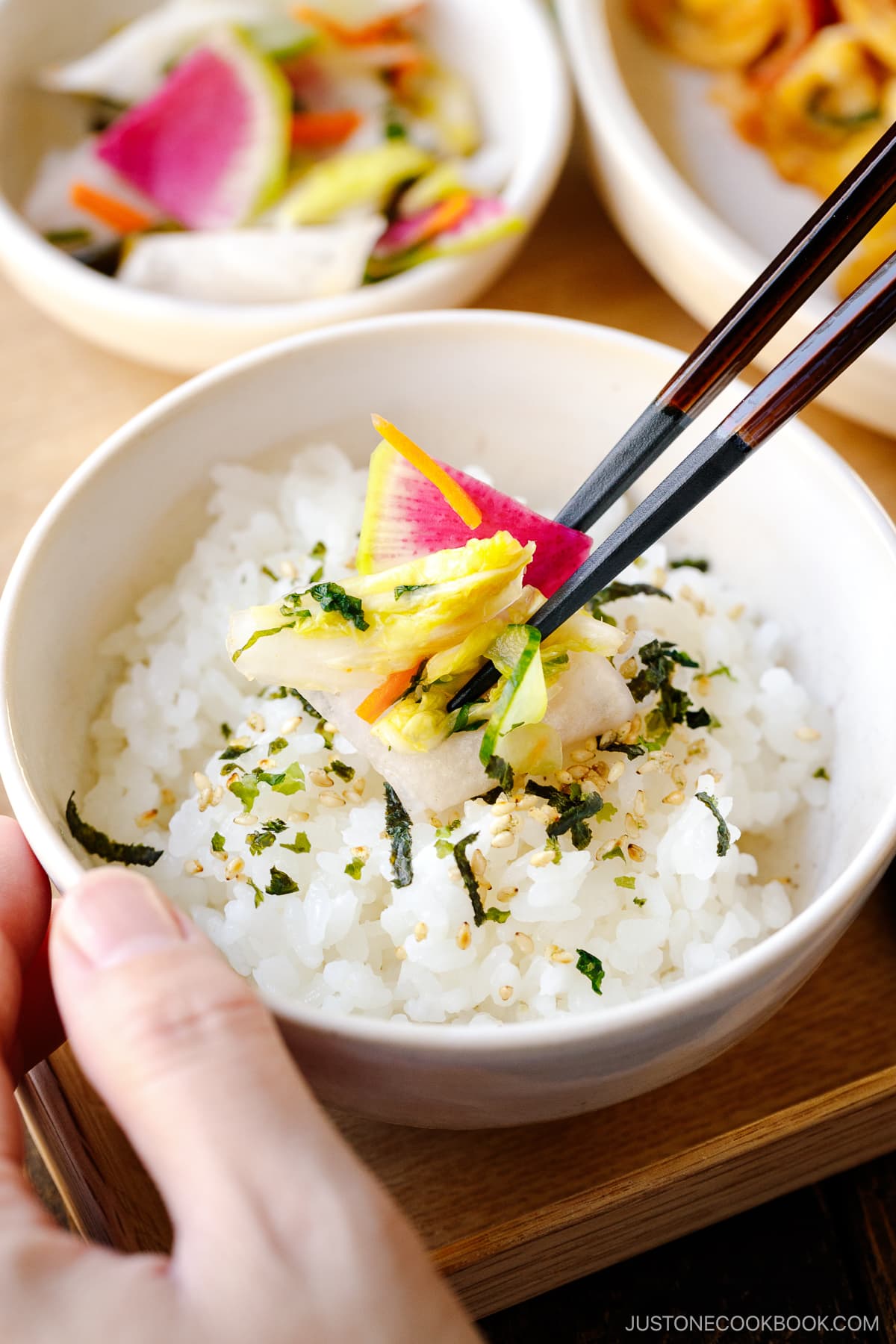

Ingredients for Asazuke
This is how I make my ‘everyday Japanese pickles,’ but feel free to customize the vegetables you use! I encourage you to use up any odds and ends of vegetables left in the fridge. See the recipe card below for the full ingredient list.
- Napa cabbage
- Daikon radish
- Watermelon radish
- Japanese or Persian cucumber
- Carrot
- Seasonings: salt, sugar, kombu (dried kelp), shiso leaves (optional)
- For serving: toasted sesame oil, toasted white sesame seeds, yuzu zest (optional)
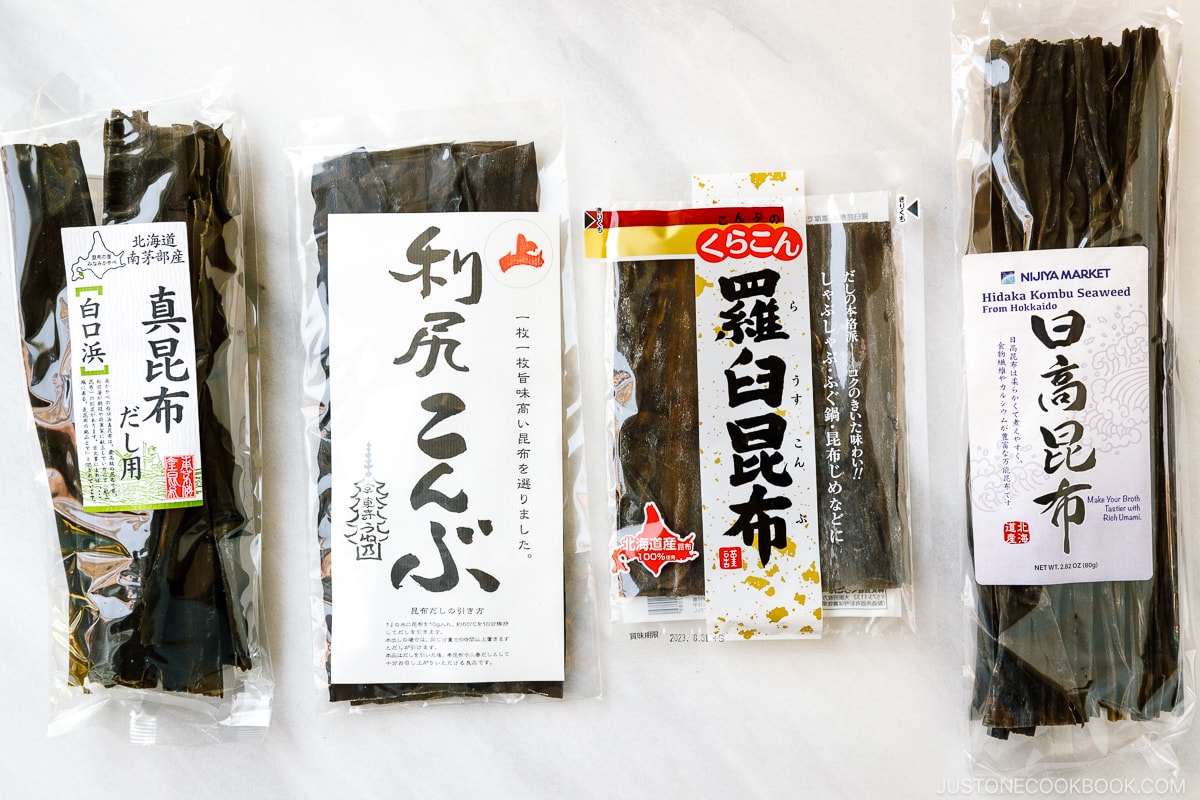

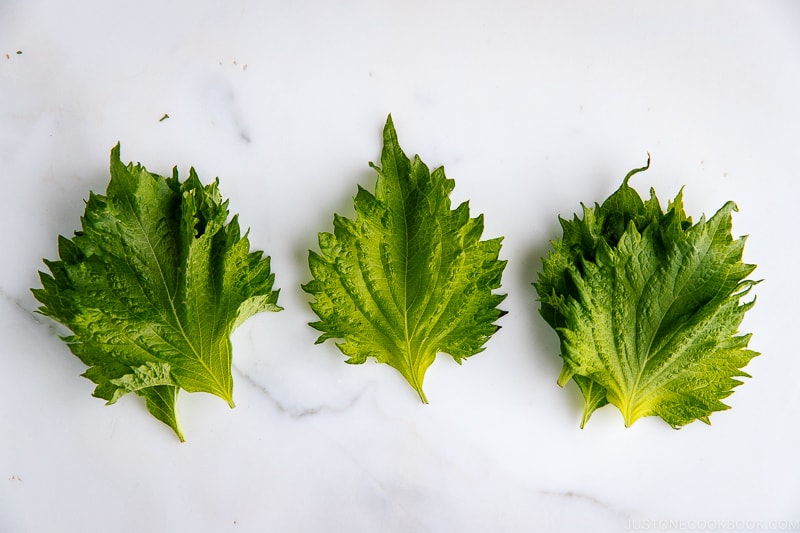

If you’re new to Japanese cooking, you may not be familiar with kombu and shiso (perilla) leaves. You can omit the shiso leaves (although I highly recommend seeking them out in a Japanese grocery store). On the other hand, kombu is the umami-boosting ingredient that you should not leave out. These days, you can easily find kombu on Amazon, so be sure to use it to make authentic Japanese pickle recipes.
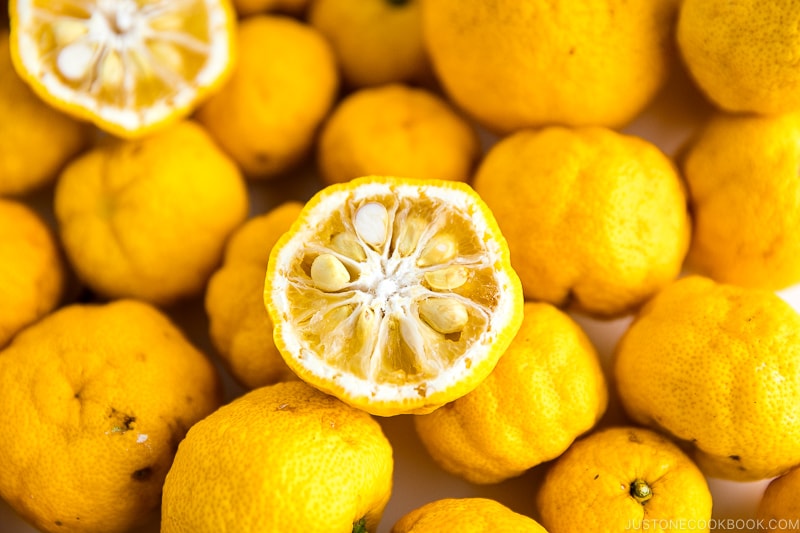

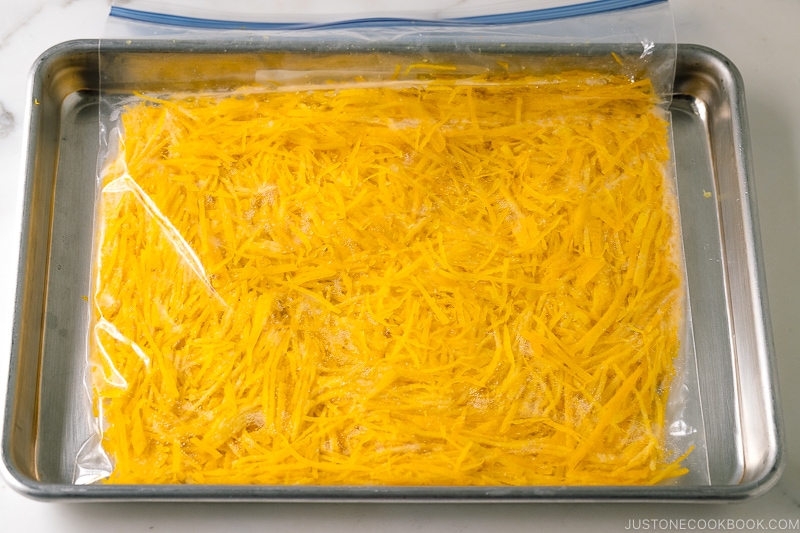

Another optional ingredient is yuzu zest. Every winter when it’s yuzu season, I get a few yuzu to make yuzu zest. I freeze it to use for miso soup, noodle soup, and my asazuke.
How to Make Everyday Japanese Pickles
- Cut the napa cabbage into small slices and the daikon and watermelon radish into halves or quarters. Then, thinly slice the daikon, watermelon radish, and cucumber (I use my favorite mandoline slicer). Finally, julienne the carrot and shiso leaves (if using).
- Weigh all the ingredients and multiply by 2.5% (veggie weight x 0.025) to get the amount of salt you‘ll need. Add the salt, sugar, and kombu to the vegetables.
- Massage the vegetables with your hands and press them with some weights. Cover and pickle in the refrigerator for 1–3 hours, or up to overnight.
- Remove the weights and discard the liquid drawn out of the vegetables. Transfer to a clean, airtight container.
- When you’re ready to serve, take out the portion you’ll serve with a clean utensil and keep the rest in the fridge at all times. I mix in yuzu zest, drizzle sesame oil, sprinkle sesame seeds, and gently toss together. Enjoy!
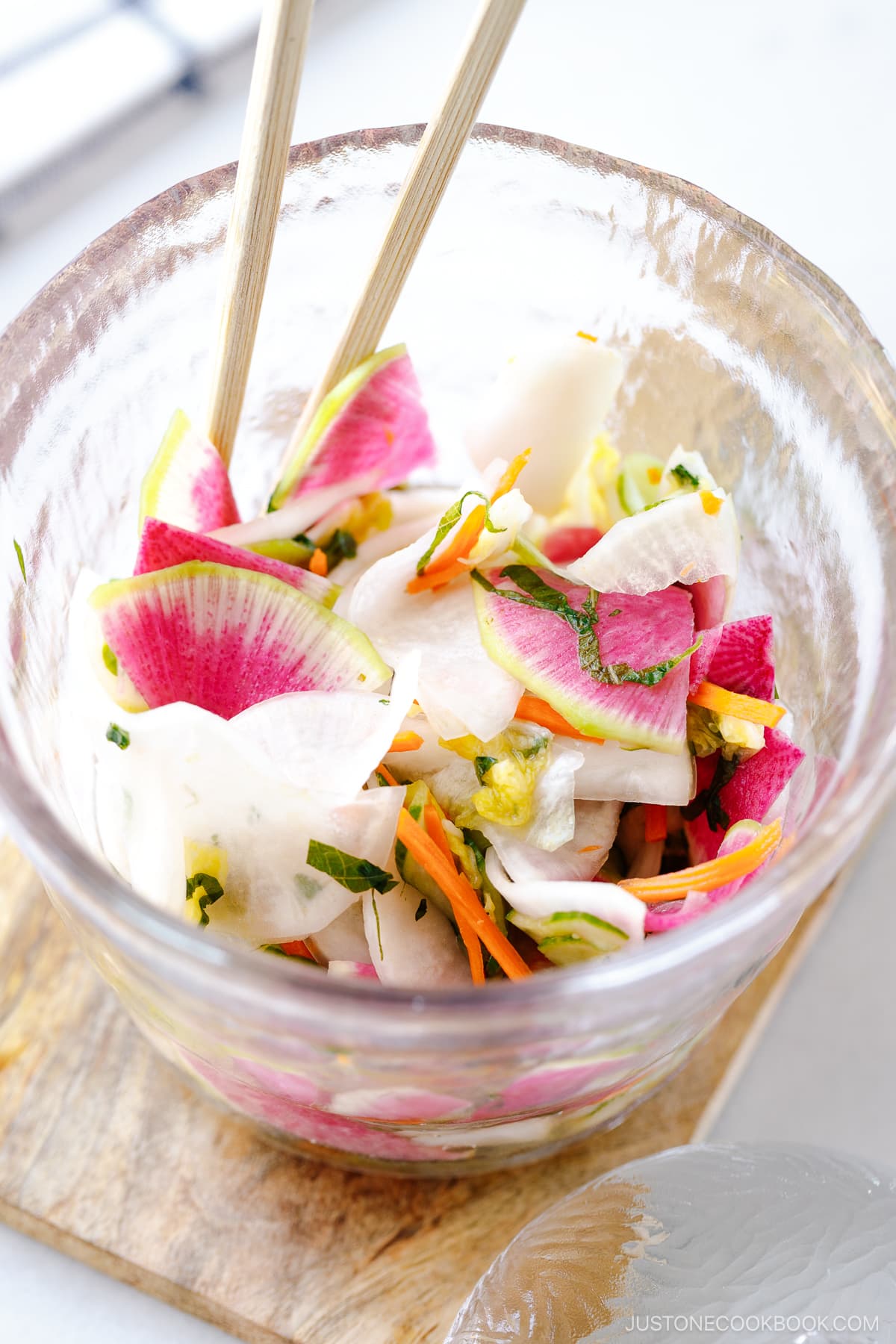

Recipe Tips
Here are some of my tips to succeed in making asazuke:
- Think about the balance of color and texture of the vegetables. I recommend following the recipe closely at first, then adjusting according to your taste and the seasonal availability of ingredients
- Use a kitchen scale to measure the amount of salt. That way, there’s no guessing, and you’ll achieve the perfect saltiness every time! I love and highly recommend using my kitchen scale.
- I use 2.5% salt for the vegetables. To calculate the amount of salt you need, weigh your sliced vegetables and multiply the total vegetable weight by 0.025 (2.5%).
- Start tasting after 1 hour of pickling. You can compare it after 2 hours and 3 hours to see which you like best.
- I love the combination of shiso leaves, sesame oil, and yuzu zest in this pickle. I hope you can try this tasty combo! So delicious. I never get tired of making this asazuke.
How to Store Japanese Pickles
- To Store: As the vegetables continue to pickle and become saltier, discard any liquid. Keep the pickles in an airtight container and store in the refrigerator for up to 3–4 days.
- To Serve: Use clean utensils to take out the portions you need and promptly place the container back to the refrigerator.
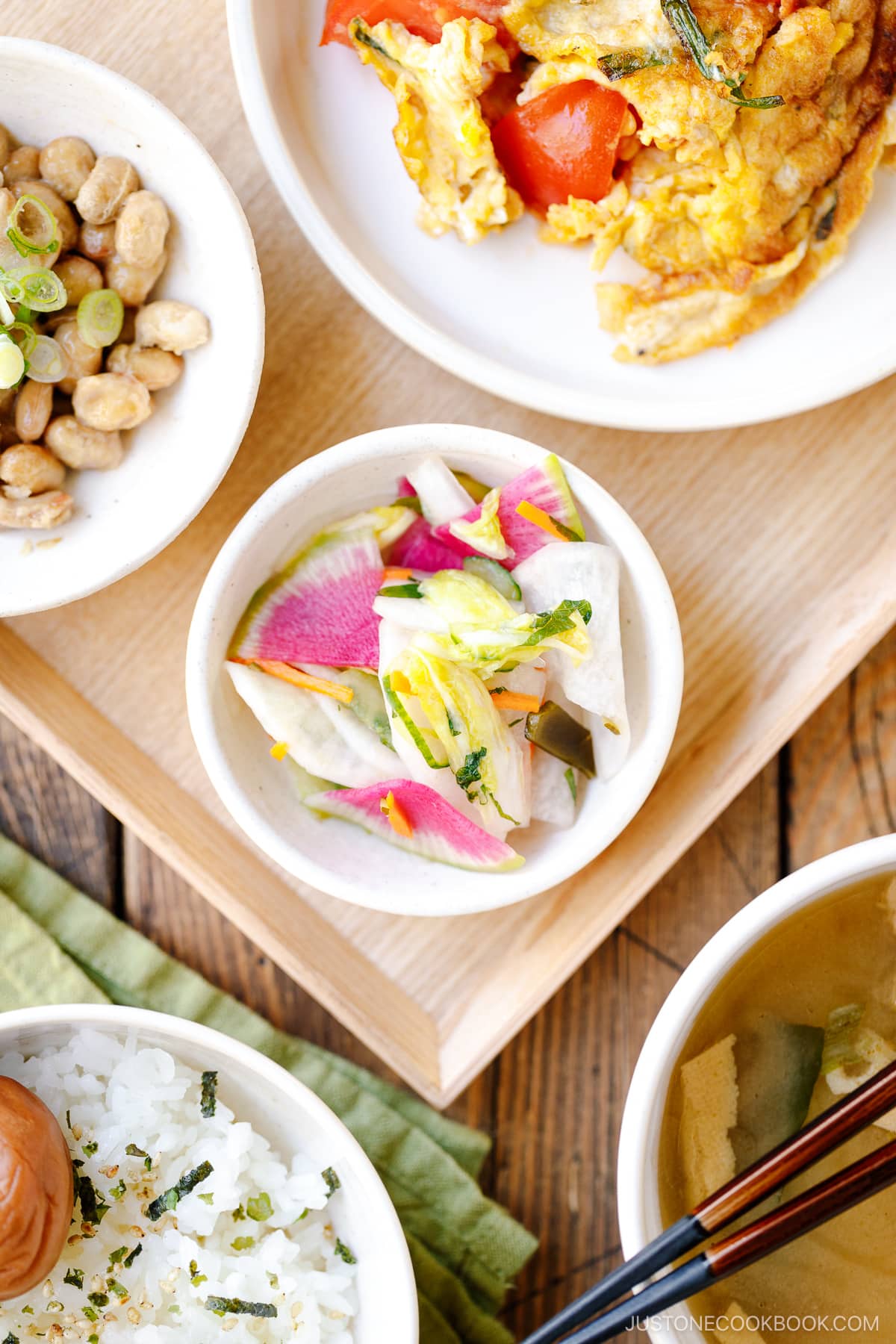

FAQs
Can I pickle for a longer time? Remember that the longer the pickling time, the more the flavor will soak into the vegetables. Also, the saltier the pickling solution, the quicker the pickling process. Using a heavier object will speed up the pickling. So, it’s all about controlling the pickle solution, timing, and weight. If you follow my recipe below, try tasting a piece of vegetable to determine when to stop pickling to achieve the desired flavor.
Can I use other vegetables? Absolutely! I often make changes based on seasonal availability. Keep in mind that denser vegetables take longer to pickle, and some vegetables release more water than others. Experiment to find the combination that works best for you. Give green cabbage, red radishes, turnips, celery, and cauliflower a try!
Can I keep asazuke longer than 3–4 days? Unfortunately, no. Asazuke pickles don’t last long for two main reasons: 1) they use raw vegetables, which are cut into small pieces and have a large surface area exposed to air, and 2) they have a lower salt concentration (typically 2–3%) than more traditional fermented pickles, making it easier for bacteria to grow.
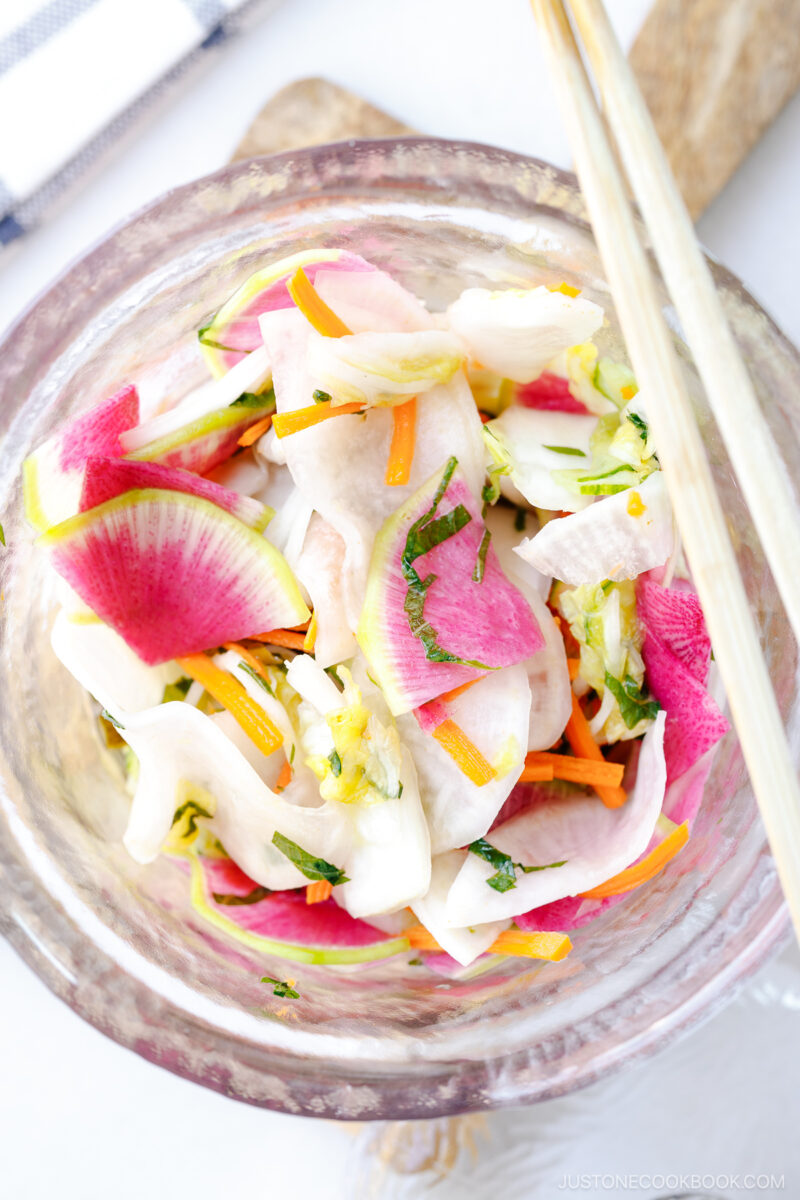

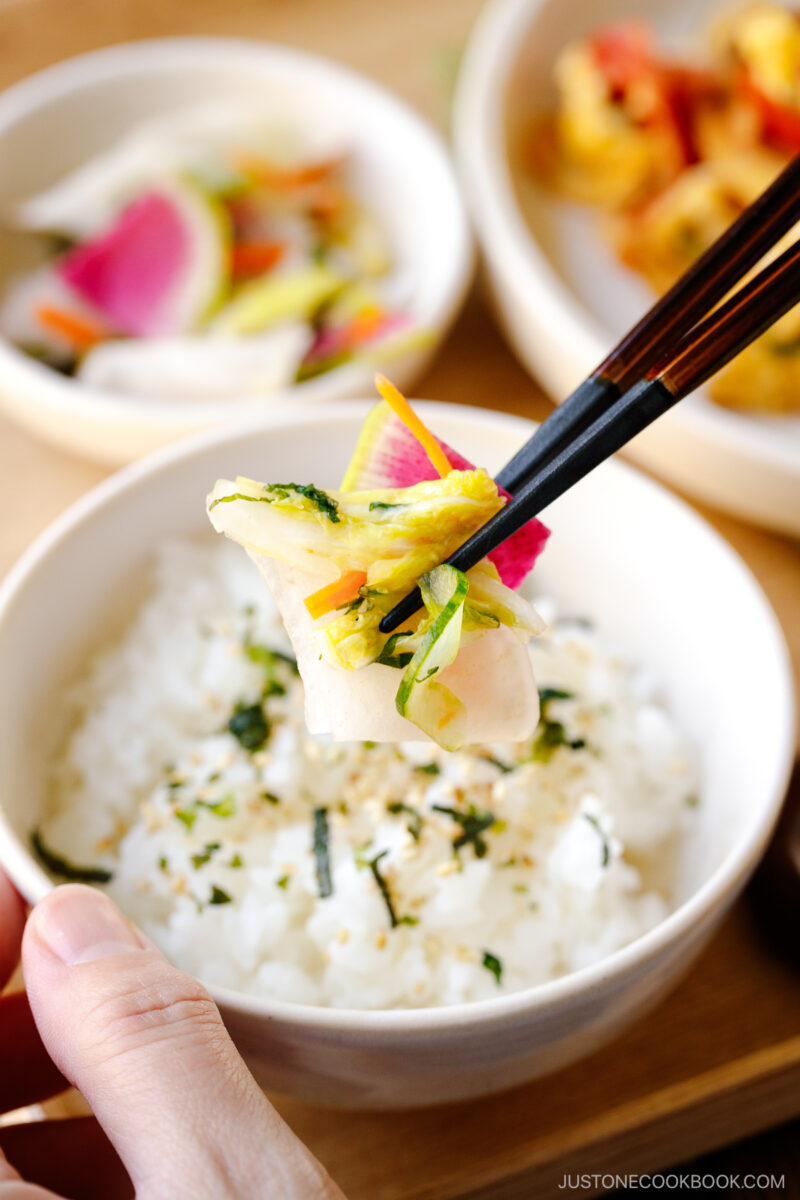

What to Serve with Japanese Pickles
Lightly salted pickles stimulate the appetite and go well with white rice, the staple food of the Japanese diet! They pair perfectly with any Japanese or Asian-style meals. Here are some dishes you can serve with the pickles to create a complete meal.
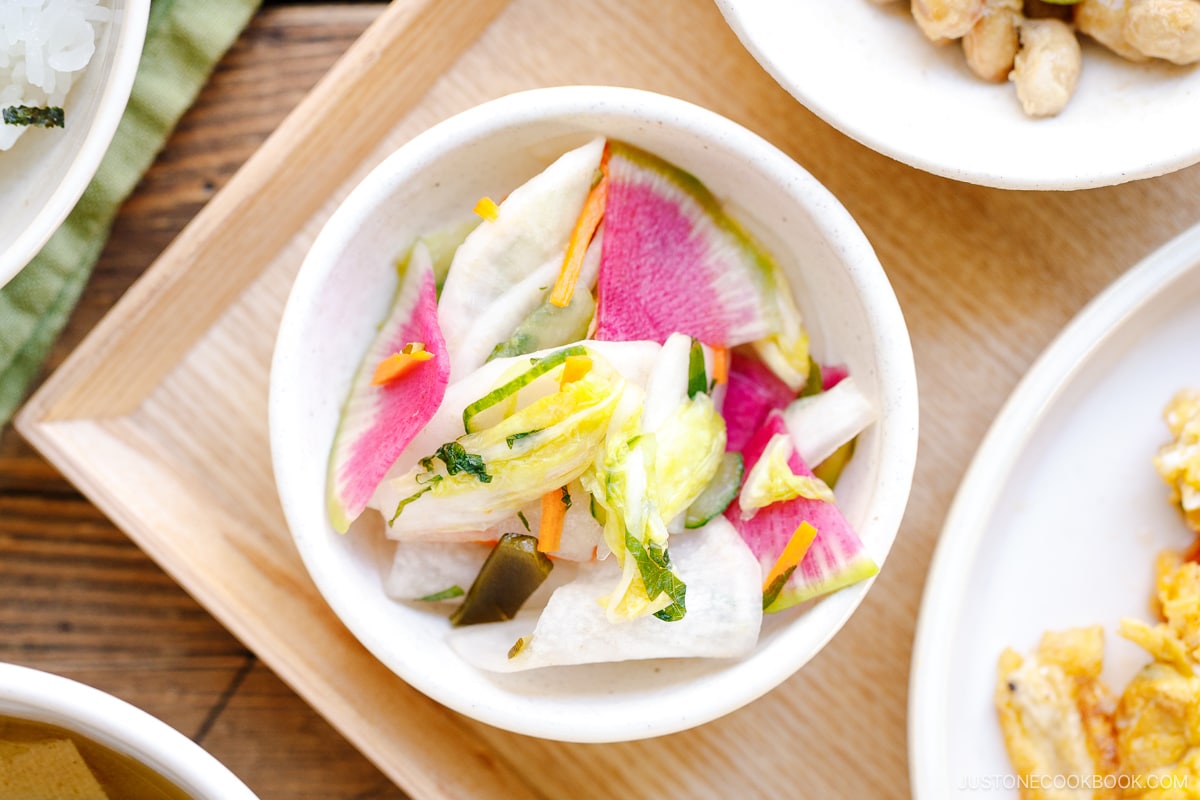

Wish to learn more about Japanese cooking? Sign up for our free newsletter to receive cooking tips & recipe updates! And stay in touch with me on Facebook, Pinterest, YouTubeand Instagram.
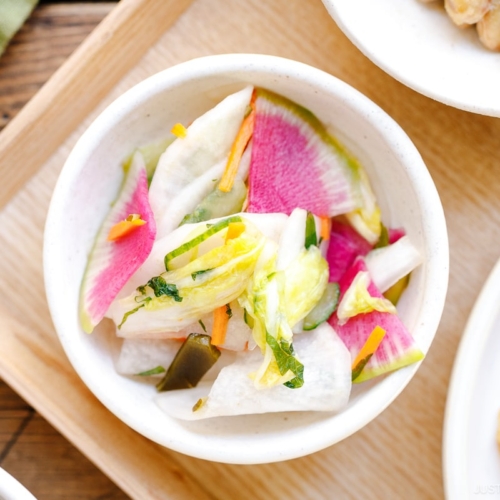

Everyday Japanese Pickles (Asazuke)
Colorful and crunchy vegetables are the star ingredients for my quick, simple Everyday Japanese Pickles. These lightly seasoned asazuke are ready in 1 hour! Take them to the next level by adding shiso leaves, yuzu zest, and sesame oil.
Ingredients
Prevent your screen from going dark
Instructions
-
Before You Start: This recipe requires a minimum pickling time of 1 hour (or up to overnight). Gather all the ingredients. Prepare a large bowl. Take note of how much the empty large bowl weighs using a digital kitchen scale so you can measure the weight of the vegetables accurately.
To Prepare the Ingredients
To Weigh the Ingredients and Season
-
Using a digital kitchen scalemeasure the total weight of the vegetables (be sure to subtract the bowl‘s weight). Multiply by 2.5% (vegetable weight x 0.025) to calculate how much salt you need. Add this amount of Diamond Crystal kosher salt to the vegetables. Here, my vegetables weighed 512 g, so I added 12.8 g salt (roughly 4 tsp).
-
Add ½ tsp sugar to the vegetables. Toast 1 piece kombu (dried kelp) over an open flame to make the kombu tender. Then, cut it into thin strips (I used kitchen shears) and add to the bowl. Finally, add the julienned shiso leaves.
To Massage and Pickle
-
Massage the salt into the vegetables with your hands. Then, press the vegetables with some weights. Here, I placed multiple glass bowls on top to press them down. Cover and let them pickle in the fridge for 1–3 hours (at least 1 hour and up to overnight).
-
After pickling, remove the weights. Discard the liquid that the vegetables released into the bowl. You do not need to tightly squeeze out the liquid. Transfer to a clean airtight container.
To Serve
-
Take out the portion you will serve with a clean utensil. You can enjoy these pickles as is or add the mix-in ingredients of your choice. Our family loves to add yuzu zest, toasted sesame oiland toasted white sesame seeds. Gently mix together and serve immediately.
©JustOneCookbook.com Content and photographs are copyright protected. Sharing of this recipe is both encouraged and appreciated. Copying and/or pasting full recipes to any website or social media is strictly prohibited. Please view my photo use policy here.

